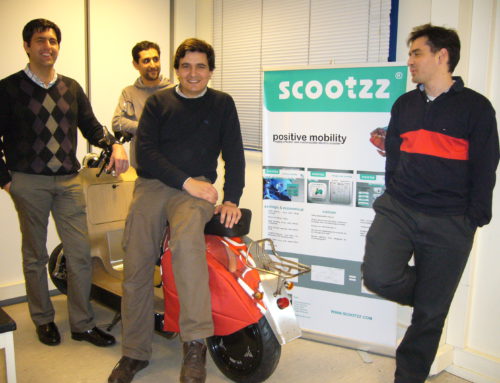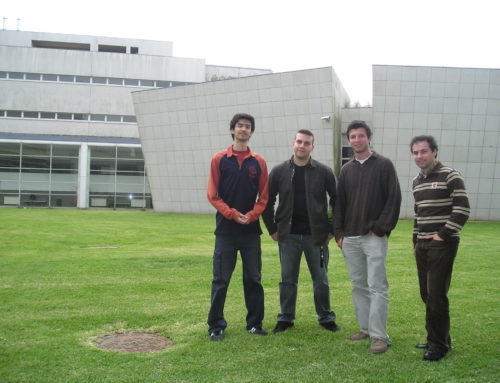
PORTUGAL
Interview with Professor Stephen Markham
Nov 14, 2016
We are most thankful and flattered by the kind availability of Professor Stephen Markham for this interview in MIETE-BLOG. Professor Stephen Markham is Director of The Entrepreneurship Collaborative at the Department of Management, Innovation & Entrepreneurship at the North Carolina State University (USA). He was also a member of the NCSU Team that lectured the 1st COHITEC Technology Commercialization training promoted by COTEC that led to the launching of MIETE in September 2004. His research focuses on the roles and processes in the front end of technological innovation, concentrating on the role champions take in early commercial development of technology. He actively teaches in the executive education and MBA programs in the areas of leadership, corporate culture, innovation, technology entrepreneurship and technology commercialization. Dr. Markham also consults with numerous Fortune 500 companies on how to utilize their technologies to enter and expand into new markets, counter competitive threats and position the companies as world-class innovators. The motivation for this interview stems exactly from this activity in the Front End of Innovation (FEI) and Technology Commercialization.
João José Pinto Ferreira: Steve, thank you so much for your availability for this interview! Research in the Front End of Innovation began in the early 90’s (http://www.frontendinnovation.com/), however, this expression is still not well known in industry or event in academy. People will typically refer to Innovation Management and will rarely talk about the front end of innovation! My first question is, do you have an explanation for this? How do you distinguish between these two expressions
Stephen Markham: Very interesting question. Innovation Management is a very broad term and includes all areas of innovation in a company such as products, processes, administrative functions, production systems, business models and even personnel and facilities. Managing innovation in all these areas is critical for companies to stay current and not fall behind on all facets of the business.
The Front End of Innovation (FEI) has a much narrower scope. It refers only to the first part of product innovation. It does not include the full product development process or any of the other components mentioned as part of Innovation Management. FEI is singled out as a separate area since it is critical for companies to get the product market concept right. The front end includes understanding the social, technical, regulatory and environmental trends, intimately knowing your customers needs, the value proposition, revenue models, partnerships, and intellectual property.
You might say that Innovation Management helps ensure companies do things right while the FEI helps ensure companies do the right things.
JJPF: Now that it is clear – your research focuses on the role champions take in early commercial development of technology. Could we assume the champion as someone behaving like an entrepreneur while working within a large organization? From your experience, which would be the main differences between the champion and entrepreneurial mindset?
SM: Champions and entrepreneurs share many of the same traits, motivations, and tactics. For example they both accept more risk for the decisions they make but at the same time try to reduce risk as much as possible. They also tend to have a larger variety of interests and hobbies, have a higher tolerance for ambiguity and leverage their networks to generate support.
The main differences are in the circumstances: existing companies are very different from startups. Champions must deal with the existing infrastructure and are limited to existing strategy and skills in the company. Therefore, they need to be adept at corporate politics. If they are successful at generating support in the organization and may have a much higher resource base to do things like market research, production planning, sales and distribution. Projects may start slower for a champion but then accelerate faster later.
The entrepreneur is free to create a business model unencumbered by the existing business and do not need to worry about company politics. Resources for startup may not be available for the simplest of operations. They have to make everything from scratch. The need for everything at once can be overwhelming and having a limited number of people to talk with can restrict the options necessary for high growth. Successful entrepreneurs extend their networks beyond their existing organization. Entrepreneurs may be fast to start but the need for additional resources can slow progress later in development.
The most pronounced similarity is that both champion and entrepreneur create value in new and exciting way. They recognize big opportunities, know how to position the opportunity in the market, understand customer needs, leverage networks and know the financial impacts in fine detail. Champions and entrepreneurs convince other people that there is a significant business opportunity if they can pool resources and work together. Even though there are important similarities champions and entrepreneurs have strong preferences for their circumstances. Champion do prefer to be in large organizations and entrepreneurs prefer to build new companies.
JJPF: In your paper:
Markham. The Impact of Front‐End Innovation Activities on Product Performance. Journal of Product Innovation Management (2013) DOI: 10.1111/jpim.12065
and referring to the Front‐End Innovation you write:
“It includes such work as: technical feasibility demonstrations, early market research, financial viability analysis, business model development, and business plan preparation (Markham, Ward, Aiman-Smith, and Kingon, 2010).”
This looks very familiar to what we do in our Master Program in Innovation and Technology Entrepreneurship. It seems entrepreneurs have to do this was well! Is there any difference? Would the corporate strategy be the restriction for the champion that the individual entrepreneur does not have to cope with?
SM: In this area there is no difference. The creation of value is key to both corporate and entrepreneurial ventures. In fact these are the most important things any entrepreneur can do to ensure success.
You are exactly right – the champion must deal with the existing deployment of corporate resources. This is accompanied by people responsible for the use of those resources and the efficient use of them. Therefore the champion must convince people who have already done their best to use their resources wisely to do something different – that usually includes more risk than their present resource allocation.
At one level entrepreneurs do not have to deal with this internal resource allocation challenge. At another level resource allocation decisions can become a contentious issues with investors. Stock purchase agreements usually contain provisions for the investors to have control over the uses of funds. In this respect the entrepreneur must deal with convincing investors about the opportunity and risk of a given commercialization path.
JJPF: Would you say that entrepreneurship training makes sense for corporate jobs in the area of Front‐End Innovation? If so why?
SM: Creating value is the core concept in both entrepreneurship and corporate innovation. Teaching these skills to corporate innovators in an entrepreneurial setting has advantages. First, learning value creation independent from corporate politics allows people to focus on the essentials of creating exceptional business opportunities. Second, the entrepreneurial model for teaching corporate innovation provides people a view of the complete business cycle from end to end. This is an invaluable perspective for corporate innovators so they know how to assess the total impact of their ideas on the company. Third, entrepreneurship is exciting and motivating. When corporate innovators see the entire process and impact they become more motivated and capable of creating value.
NOTE: If this article was interesting for you, you may enjoy to reading this post.




